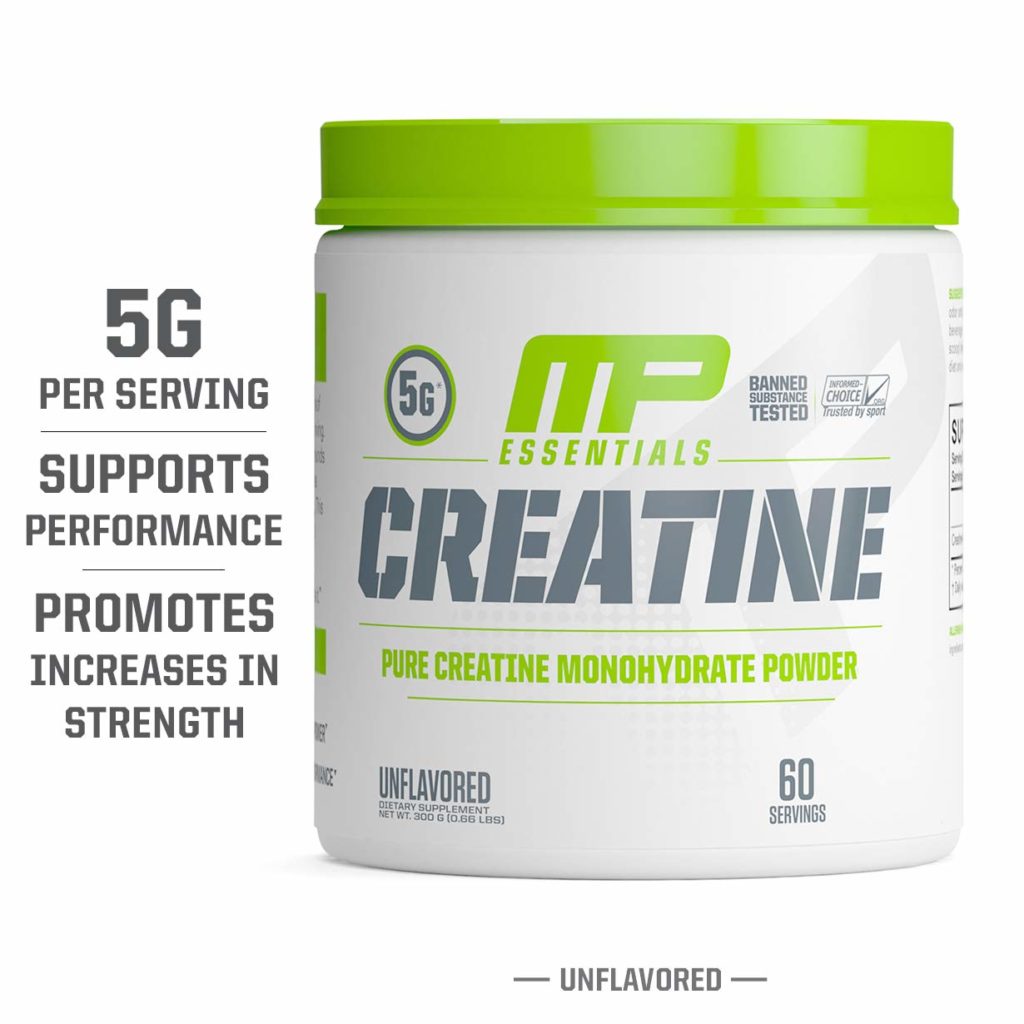What is Creatine and How is it Used?
Creatine is a widely-used dietary supplement that has gained popularity among athletes and fitness enthusiasts for its potential to improve performance and enhance muscle recovery. It is a naturally occurring organic acid found primarily in muscle tissue, with small amounts also present in the brain. As a supplement, creatine is available in various forms, including creatine monohydrate, creatine hydrochloride, and creatine citrate, to name a few. The supplement is typically consumed in powder form, with users mixing it with water or other beverages before consumption.
In the context of creatine supplements, a ‘scoop’ refers to the provided measuring tool that comes with the product, allowing users to easily measure out the recommended serving size. The size of a scoop can vary depending on the brand and product, with most scoops ranging between 2.5 to 5 grams (g) of creatine per serving. Understanding the concept of a scoop is essential for accurately measuring and consuming creatine, ensuring users reap the supplement’s potential benefits while avoiding potential side effects from overconsumption.
Factors Influencing the Price of Creatine
The cost of creatine can vary significantly depending on several factors. Brand reputation plays a crucial role in determining the price, with well-established brands often charging a premium for their products. These brands have built trust and credibility among consumers, leading them to believe that the products are of higher quality and more effective. However, this does not necessarily mean that more expensive creatine products are always better, as discussed in a later section.
Product quality is another essential factor that can influence the price of creatine. Higher-quality creatine supplements may contain additional ingredients, such as amino acids or electrolytes, that can enhance the supplement’s effectiveness and overall value. Additionally, the manufacturing process and quality control measures can impact the price, as more rigorous testing and adherence to strict standards can increase production costs.
Packaging is a less obvious factor that can affect the cost of creatine. More elaborate and durable packaging can drive up the price, while simpler and more cost-effective packaging can help keep costs down. However, it is essential to note that a more expensive package does not necessarily translate to a better-quality product.
In summary, the price of a scoop of creatine can vary depending on the brand reputation, product quality, and packaging. It is crucial for consumers to consider these factors when comparing products and making purchasing decisions, keeping in mind that a higher price does not always guarantee better quality or results.
Average Cost of Creatine: How Much Should You Expect to Pay?
Based on market research and analysis, the average cost of a scoop of creatine ranges between $0.05 and $0.20. This price range accounts for various forms of creatine, such as creatine monohydrate, creatine hydrochloride, and creatine citrate, among others. It is essential to note that prices can vary depending on factors such as brand reputation, product quality, and packaging, as discussed in the previous section.
Creatine monohydrate, the most common form of creatine, typically costs between $0.05 and $0.10 per scoop (usually 5g). Creatine hydrochloride, which is believed to be more soluble and bioavailable than creatine monohydrate, tends to be priced slightly higher, ranging from $0.10 to $0.15 per scoop (also typically 5g). Creatine citrate, another form of creatine, is often found in the same price range as creatine hydrochloride, ranging from $0.10 to $0.15 per scoop (usually 3g).
These price ranges are based on an analysis of popular brands and store brands, offering consumers a wide variety of options when choosing a creatine supplement. While these averages provide a useful guideline, it is essential to consider the specific product, brand, and purchasing location when determining the cost of one scoop of creatine.
Comparing Prices: Major Brands and Store Brands
When comparing the cost of creatine, it is essential to consider both major brands and store brands. Major brands often have a reputation for high-quality products and rigorous testing, but they may come at a premium price. Store brands, on the other hand, may offer more affordable options without sacrificing quality.
Major brands like Optimum Nutrition, MuscleTech, and Dymatize typically price their creatine products between $0.10 and $0.20 per scoop. These brands often provide various forms of creatine, such as creatine monohydrate, creatine hydrochloride, and creatine citrate, giving consumers a choice based on their preferences and goals. While these prices may seem high, major brands often invest in research, development, and marketing, which can contribute to their higher cost.
Store brands, such as those offered by Walmart, GNC, and Walgreens, usually price their creatine products lower than major brands. The cost of a scoop of creatine from a store brand can range from $0.05 to $0.15, depending on the form and packaging. Store brands may not have the same level of brand recognition or marketing efforts as major brands, but they often adhere to strict quality standards and regulations, ensuring the safety and efficacy of their products.
When deciding between major brands and store brands, consider factors such as product quality, brand reputation, and personal preferences. It is also essential to read labels and ingredient lists to ensure the product meets your needs and aligns with your fitness goals. While major brands may offer additional features like flavored options or added ingredients, store brands can provide affordable alternatives without compromising quality.
How to Save Money on Creatine Purchases
While the cost of creatine can add up over time, there are several strategies to help you save money without compromising on quality. Here are some tips on how to save money when buying creatine:
- Purchase in Bulk: Many brands offer discounts when you buy larger quantities of creatine. By purchasing a larger container or a bundle, you can save money per scoop, especially if you consume creatine regularly.
- Look for Discounts and Promotions: Keep an eye out for sales, promotions, and discounts offered by both online and brick-and-mortar retailers. These deals can help you save a significant amount of money on your creatine purchases.
- Subscribe to Brand Loyalty Programs: Some brands offer loyalty programs that provide exclusive discounts and promotions to subscribed members. By joining these programs, you can access special offers and save money on your creatine purchases.
- Compare Prices: Before making a purchase, compare prices from different brands and retailers. This can help you find the best deal and ensure you are getting the most value for your money.
- Buy Store Brands: Store brands often provide affordable alternatives to major brands without sacrificing quality. By choosing a store brand, you can save money without compromising on your fitness goals.
By employing these strategies, you can save money on creatine purchases and make your supplement budget go further. Remember to always prioritize product quality and brand reputation when looking for ways to save, as low-quality creatine products may not deliver the desired results and could potentially lead to unwanted side effects.
The Role of Serving Size in the Cost of Creatine
The recommended serving size of creatine can significantly impact the cost of your supplementation. Creatine supplements typically come with a scoop that measures out a specific amount of creatine, usually between 2.5g and 5g. While a smaller scoop may seem more cost-effective initially, it can lead to higher long-term costs due to increased consumption.
For instance, if you use a creatine supplement with a 2.5g scoop, you may need to consume two scoops to meet the recommended daily intake of 5g. This can effectively double the cost of your creatine supplementation, as you will be consuming twice the amount of product for the same price. On the other hand, a 5g scoop allows you to meet the recommended daily intake with just one scoop, reducing the overall cost per serving.
When comparing creatine products, consider the recommended serving size and the cost per scoop. While a smaller scoop may seem more affordable, it can lead to higher long-term costs due to increased consumption. Conversely, a larger scoop can provide a more cost-effective option, especially if you consume creatine regularly as part of your fitness routine.
It is essential to strike a balance between the recommended serving size and cost when choosing a creatine supplement. By understanding how serving size impacts the cost, you can make an informed decision that aligns with your fitness goals and budget.
Long-Term Cost Considerations: Monthly and Annual Expenses
When incorporating creatine into your fitness routine, it is essential to consider the long-term costs associated with regular supplementation. By estimating the monthly and annual expenses, you can better plan your budget and make informed decisions about your creatine purchases.
To calculate the estimated monthly cost, consider the average cost per scoop of creatine and the number of scoops you consume per month. For example, if a scoop of creatine costs $0.10 and you consume 60 scoops per month (two scoops per day), your monthly expense would be $6.00.
To estimate the annual cost, simply multiply the monthly expense by 12. In this example, your annual expense for creatine supplementation would be $72.00.
By understanding the long-term costs associated with creatine supplementation, you can make informed decisions about your fitness budget and explore ways to save money. For instance, purchasing in bulk, looking for discounts and promotions, or subscribing to brand loyalty programs can help reduce the overall cost of your creatine supplementation.
It is essential to remember that long-term costs can add up, especially when using creatine regularly. By planning and budgeting accordingly, you can ensure that you are getting the most value for your money while still meeting your fitness goals.
Is More Expensive Creatine Always Better?
When choosing a creatine supplement, many consumers assume that a higher price tag guarantees better quality and results. However, this is not always the case. While brand reputation, product quality, and packaging can influence the price of creatine, they do not necessarily determine the effectiveness of the supplement for an individual’s fitness goals.
More expensive creatine products may offer additional features, such as added ingredients, flavors, or higher purity levels. However, these features do not always translate to better performance or muscle recovery for every user. In fact, some users may find that simpler, more affordable creatine supplements, such as creatine monohydrate, provide the desired results without the added cost.
When selecting a creatine supplement, consider your personal fitness goals, budget, and preferences. If you are looking for a basic creatine supplement to support your workouts, a more affordable option may be sufficient. On the other hand, if you prefer a flavored supplement with added ingredients, a more expensive option may be a better fit for your needs.
Ultimately, the effectiveness of a creatine supplement depends on individual factors, such as diet, exercise routine, and genetics. While more expensive creatine products may offer additional features, they do not guarantee better results. By considering your personal fitness goals and budget, you can make an informed decision about which creatine supplement is right for you.








